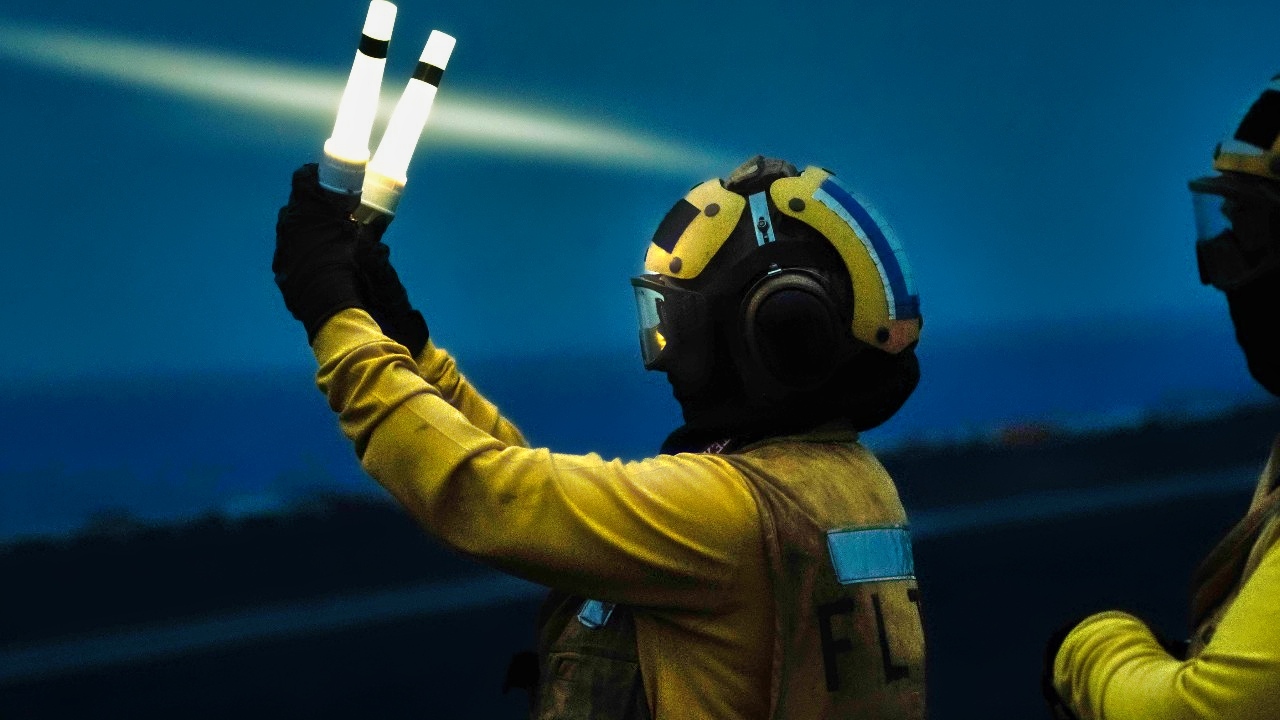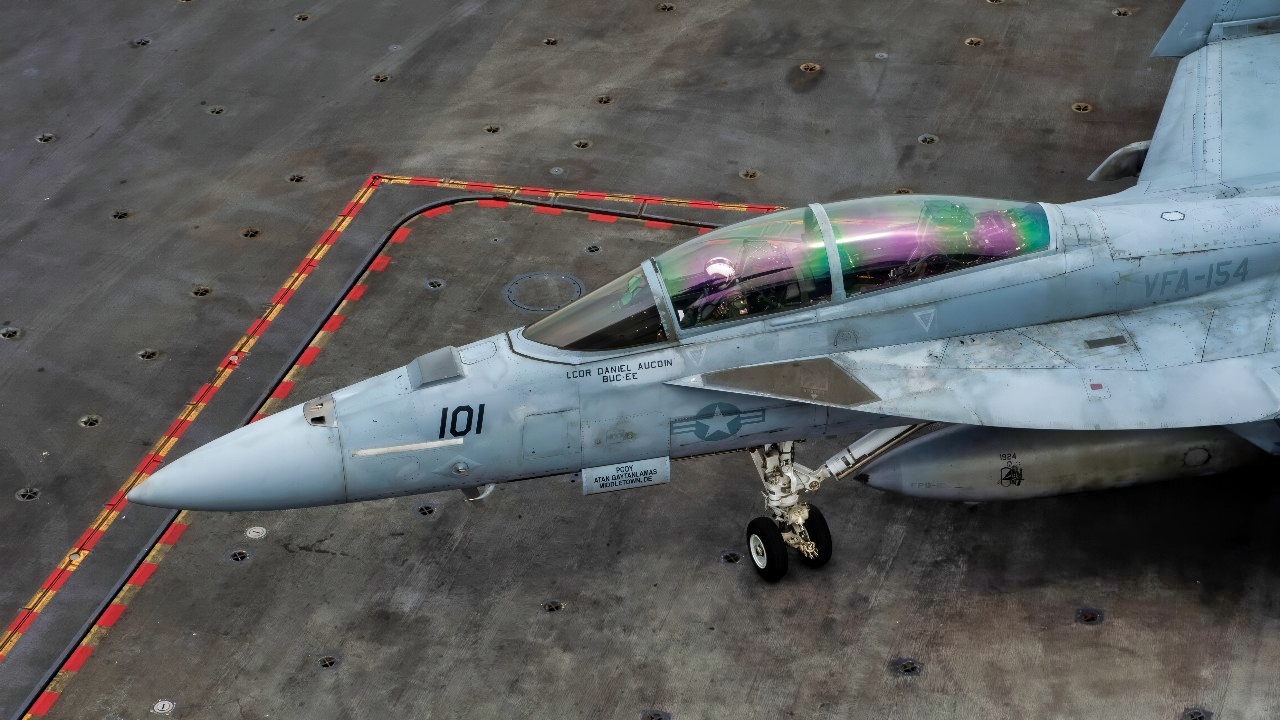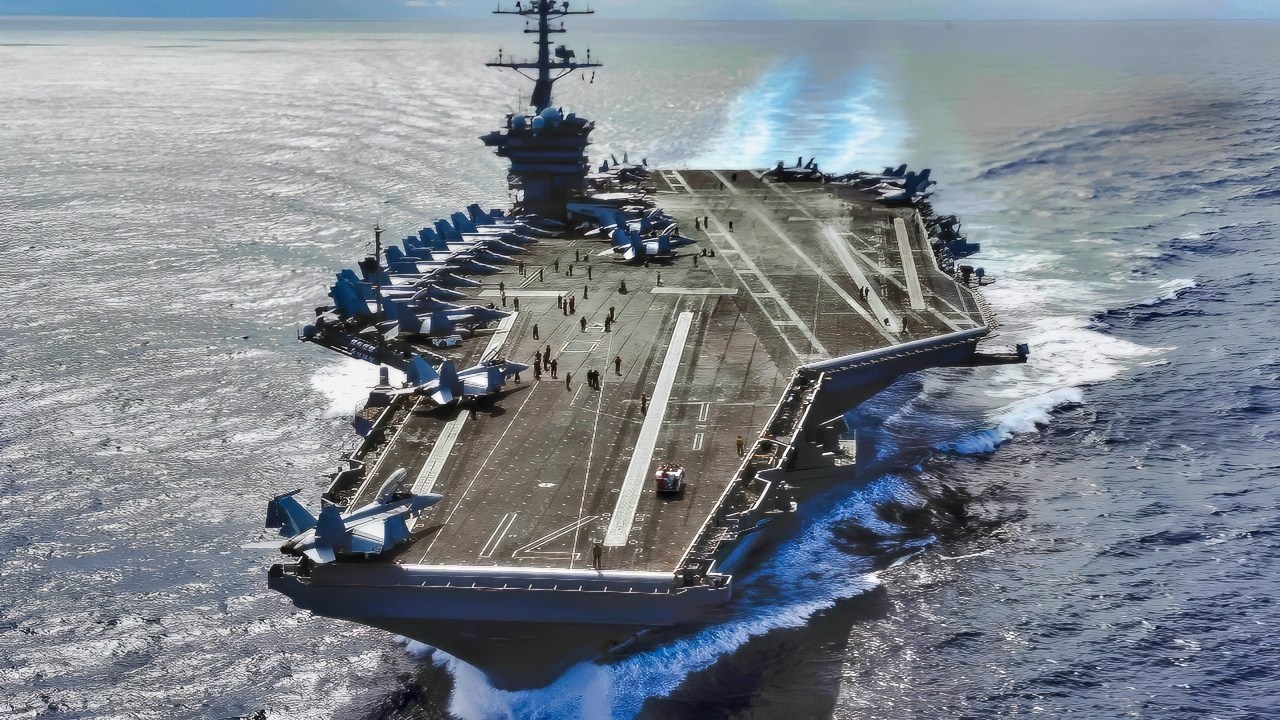Article Summary: USS Theodore Roosevelt (CVN-71): Power, Controversy, and a 50-Year Run
-USS Theodore Roosevelt (CVN-71) is a Nimitz-class, nuclear-powered supercarrier built with pioneering modular construction and designed for global power projection as the core of a Carrier Strike Group.

PHILIPPINE SEA (Feb. 5, 2024) The Nimitz-class aircraft carrier USS Theodore Roosevelt (CVN 71) transits the Philippine Sea, Feb. 5, 2024. Theodore Roosevelt, flagship of Carrier Strike Group Nine, is underway conducting routine operations in the U.S. 7th Fleet area of operations. An integral part of U.S. Pacific Fleet, U.S. 7th Fleet operates naval forces in the Indo-Pacific and provides the realistic, relevant training necessary to execute the U.S. Navy’s role across the full spectrum of military operations – from combat operations to humanitarian assistance and disaster relief. U.S. 7th Fleet works together with our allies and partners to advance freedom of navigation, the rule of law, and other principles that underpin security for the Indo-Pacific region. (U.S. Navy photo by Mass Communication Specialist 2nd Class Andrew Benvie)

U.S. 5TH FLEET AREA OF OPERATIONS (Aug. 6, 2024) An Aviation Boatswain’s Mate (Handling) signals aircraft on the flight deck of the Nimitz-class aircraft carrier USS Theodore Roosevelt (CVN 71), Aug. 6. Theodore Roosevelt is deployed to the U.S. 5th Fleet area of operations to support maritime security and stability in the U.S. Central Command area of responsibility. (Official U.S. Navy photo)
-Initially opposed by President Carter on cost grounds, funding was restored amid late-1970s crises, and TR entered service in time for the 1991 Gulf War.
-With twin A4W reactors, 50-year life, and refueling every 20 years, the ship supports high sortie rates, larger air wings, and modernized systems, including F-35C operations.
-TR weathered a high-profile 2020 COVID-19 leadership controversy.
-Set to serve into the mid-2030s, it will ultimately be replaced by the more automated, EMALS-equipped Gerald R. Ford class.
Nimitz-Class to Ford-Class: What’s Next After the Theodore Roosevelt
As a Nimitz-class nuclear-powered supercarrier, the U.S. Navy’s USS Theodore Roosevelt (CVN-71) is one of the largest warships ever built.
It is designed for power projection: launching and recovering fixed-wing aircraft, including fighters, early warning aircraft, and electronic warfare planes, while also acting as the keystone of a Carrier Strike Group (CSG).
CVN-71 is the fourth ship named after a member of the Roosevelt family and was launched in the mid-1980s, just in time for operations in 1991 during the Gulf War.
The Nimitz-class, named after the Pacific Fleet commander during the Second World War, Fleet Adm. Chester W. Nimitz, differs significantly from the carrier classes that preceded it. Most ships are propelled by marine diesel, gas turbines, or hybrid electric systems, but the Nimitz-class’ power plants are a pair of A4W nuclear reactors.
The heat from these reactors is used to produce steam, which drives the turbines that move the ship’s propeller shafts and propellers.
The USS Theodore Roosevelt was the first U.S. aircraft carrier built using modular construction, during which sections of the ship are built and assembled using enormous cranes.

(July 24, 2025) – A U.S. Navy F/A-18F Super Hornet, assigned to the “Black Knights” of Strike Fighter Squadron (VFA) 154, transits the flight deck of Nimitz-class aircraft carrier USS Theodore Roosevelt (CVN 71), July 24, 2025. Theodore Roosevelt, flagship of Carrier Strike Group (CSG) 9, is underway conducting exercises to bolster strike group readiness and capability in the U.S. 3rd Fleet area of operations. (U.S. Navy photo by Mass Communication Specialist Seaman Maddix Almeyda)
Despite changes to the ship, modular construction shaved nearly a year and a half off of the projected production schedule, and the technique has been used on all aircraft carriers since built.
With a service life of 50 years — and refueling only every 20 years — the class offers significantly greater endurance than its conventionally powered counterparts.
The first of the class was commissioned in 1975, while the last of the class, the USS George H. W. Bush (CVN-77), was commissioned in 2009.
The Carter Delay
President Jimmy Carter initially vetoed the Fiscal Year 1979 Department of Defense Authorization bill, stating that it dedicated an excessive amount of money for the carrier, creating a fiscal diversion that drew precious dollars from other important defense needs. Carter cited the Nimitz specifically as wasteful and said it would be a drain on the continued buildup of NATO forces.
Ultimately, the president would reverse his stance. Jarred by violent international events – in particular the Iran hostage crisis – and driven by the need for a stronger U.S. military presence in the Middle East and Indian Ocean, Carter dropped his opposition to the carrier.
The hostage crisis made apparent the need for deployable carrier battle groups that could project power globally in support of American and allied strategic interests.
In the FY 1980 defense authorization bill, funds for the USS Theodore Roosevelt were secured.
Compared to the older carriers the Nimitz-class replaced, they are not only larger, with greater endurance, but they also support faster sortie rates, larger air wings, and additional space for fuel and ordnance.
They’re also more survivable and offer commanders a robust suite of command, control and support systems.
COVID-19 Controversy
In March 2020, three sailors onboard the USS Theodore Roosevelt tested positive for Covid while aboard the ship, prompting a visit to Guam.
There, the ship’s commander, Captain Brett Crozier, wrote an unclassified email to superiors asking for emergency evacuation to the island.
Acting Secretary of the Navy Thomas Modly relieved Crozier, saying the captain had gone outside the chain of command. Later, Modly flew to the aircraft carrier and addressed the crew.
His remarks were widely seen as demeaning to Crozier and were strongly criticized.
After an audio recording of Modly’s remarks to the crew was leaked, he resigned, just days after relieving Crozier of command.
Service Life and Planned Retirement
Like the other Nimitz-class carriers, the Theodore Roosevelt is projected for a half-century service life, even as the pace of technological change quickens.
The Theodore Roosevelt has undergone the Refueling and Complex Overhaul as well as later modernizations that enable the Cold War-era aircraft carrier to support much newer aircraft, including the fifth-generation F-35C fleet of carrier-capable stealth aircraft.
According to some estimates, the Theodore Roosevelt will remain in service until 2035, a timeline that falls within the ship’s initially projected 50-year run. However, the new class of carriers meant to replace the Nimitz-class has faced some delays.
Nevertheless, and despite improvements to the Nimitz-class, the sun is setting on the USS Theodore Roosevelt and the rest of the class, which will be superseded by the Gerald R. Ford-class of supercarriers.
The Ford-class builds upon the Nimitz-class design, offering increased electrical power generation, a higher degree of automation, a smaller crew, and the ability to support the launch and recovery of newer aircraft.
To that end, the Fords are equipped with electromagnetic aircraft catapults that replace the Nimitz-class steam catapults; improved sortie generation rates; and design streamlining that offers advantages above and beyond what even the improved Nimitz ships can offer.
About the Author: Caleb Larson
Caleb Larson is an American multiformat journalist based in Berlin, Germany. His work covers the intersection of conflict and society, focusing on American foreign policy and European security. He has reported from Germany, Russia, and the United States. Most recently, he covered the war in Ukraine, reporting extensively on the war’s shifting battle lines from Donbas and writing on the war’s civilian and humanitarian toll. Previously, he worked as a Defense Reporter for POLITICO Europe. You can follow his latest work on X.
More Military
Thrust Vectoring 101: The Jet Trick That Bends Physics—and Dogfights
The Big F-20 Tigershark Fighter Program Mistake Still Stings
2025: The Year America and Venezuela Go to War?
Forget China’s J-50: U.S. 6th-Generation NGAD Fighters Flew Back in 2019










